|
|
|
|
| Missing In Action (MIA) | Prisoners Of War (POW) | Unexploded Ordnance (UXO) |
| Chronology | Locations | Aircraft | Ships | Submit Info | How You Can Help | Donate |
|
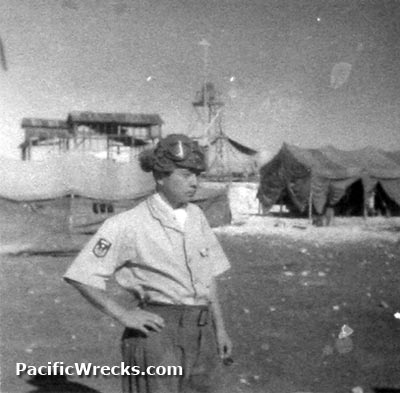  IJN c1944 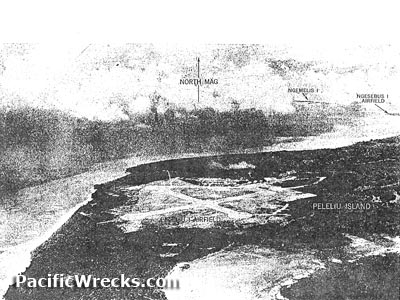 USN March 30, 1944  USN March 31, 1944 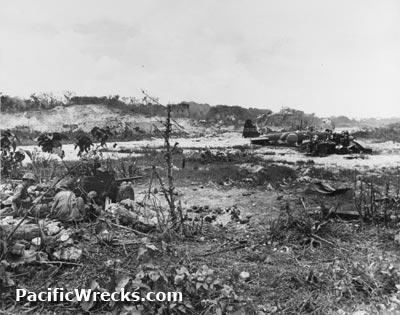 USMC Sept 15, 1944 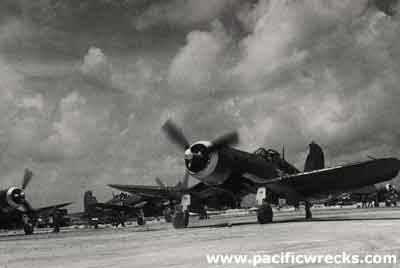 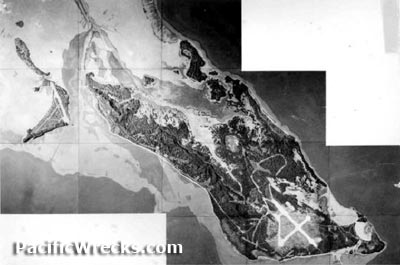 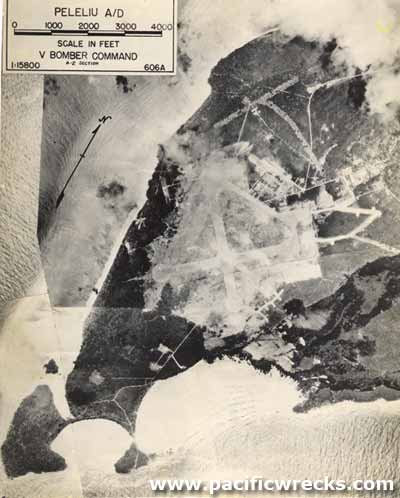 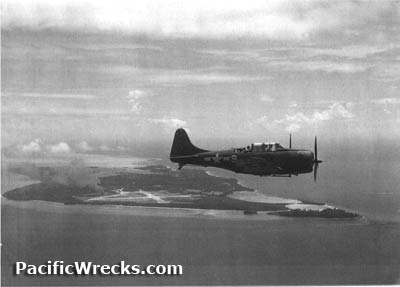 USN c1944 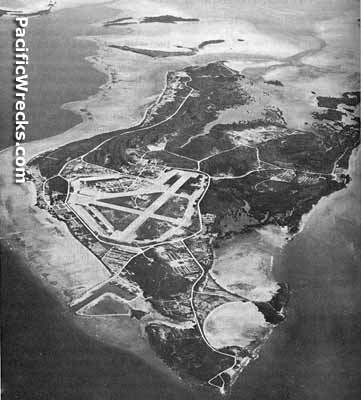 USN October 1946  Google Earth 2006  Reid Joyce 2009 |
Location Lat 7° 0' 0N 134° 13' 59E Peleliu Airfield is located in roughly the center of southern Peleliu Island in Palau (Republic of Palau, Belau, Pelew). Borders "White Beach" and "Orange Beach" to the west and south, the September 15, 1944 U.S. Marine Corps (USMC) landing beaches. Borders Umurbrogol (Bloody Nose Ridge) to the northeast. Construction Built by the Japanese, the airfield had a pair of intersecting runways with taxiways and revetments with a large concrete headquarters building. Japanese units based at Peleliu 263 Kokutai (Zero) Matsuyama February 29,1944–March 24, 1944 Guam Wartime History Peleliu Airfield was used by the Japanese as a base for fighters and bomber aircraft. Attacked by American bombers and fighters during the middle of June 1944 until the Marines captured the airfield on September 17, 1944. American missions against Peleliu June 9, 1944–September 17, 1944 Battlefield On September 15, 1944 the U.S. Marine Corps 1st Marine Division (1st Mar Div) landed on the southwest corner of Peleliu and by the end of the day had captured the southern portion of Peleliu Airfield. The Japanese attempted a counterattack by seventeen Type 95 Ha Go tanks from the 14th Division supported by infantry that advanced across the airfield, but were destroyed by the defending Marines with supporting fire from M4 Sherman tanks. Don Huebner recalls: "I remember most vividly one an F-4F Wildcat that bellied in on the Jap held airfield while we were landing. When I saw it a day or so later the American pilot was slumped over just as he died. The pilot had evidently done a dead stick landing and was shot in the temple as he slid to a stop. In those years it was vogue to wear aluminum watch bands or bracelets made from material torn off crashed aircraft, ours or theirs. Some of the guys, usually Seabees were very talented at etching pretty patterns into the shiny metal. Near that plane was a very strange sight also. On one of our stretchers there was a dead Jap, he was dressed in our Marine uniform and had a medical tag on a button telling of the frontline treatment I suppose. Evidently he had gotten on that pad during the night and hoped to be carried back inside our lines to "do his number" on unsuspecting medics. They had a pungent odor and he was recognized immediately and shot on the spot." With The Old Breed by Eugene Sledge: "At approximately 1650 I looked out across the open airfield toward the southern extremities of the coral ridges - collectively called Bloody Nose Ridge and saw vehicles of some sort moving amid swirling clouds of dust... Shell bursts appeared among the tanks. Some of our Sherman tanks had arrived at the edge of the airfield on our left and opened fire. Because of the clouds of dust and the shellfire, I couldn't see much and didn't see any enemy infantry, but the firing on our left was heavy... Rather than a banzai attack, the Japanese counter thrust turned out to be a well-coordinated tank-infantry attack. Approximately one company of infantry, together with about thirteen tanks, had moved carefully across the airfield until annihilated by the Marines on our left." By September 17, 1944 on D+2 the Marines had captured all of the airfield and began advancing inland. At Peleliu Airfield, an number of wrecked Japanese aircraft were captured including a G4M1 Betty and A6M Zero Tail 63-192 plus wreckage of many other aircraft. Immediately, U.S. Navy (USN) Seabees began repairing Peleliu Airfield for use by American fighters, bombers and transports. Afterwards, Japanese aircraft attempted to bomb the area. By December 1944, the two runways measured 6,000' x 300' and 3,900' x 260'. American units based at Peleliu (partial list) U.S. Army Air Force (USAAF) 28th PRS (F-5) Kwajalein September 24, 1944 - April 1, 1945 Saipan 421st NFS (6 x P-61) Tacloban early January 1945 - late February 1945 U.S. Marine Corps (USMC) VMF(N)-541 (F6F-3N) September 24, 1944 - ? MABS-1 Munda May 1945 U.S. Navy (USN) VR-13 (R4D) 1945 During 1945, Naval Air Transport Service (NATS) operated from the airfield during 1945, with two officers and 23 enlisted men stationed at Peleliu Airfield to handle two daily R4D flights daily from Peleliu. On August 3, 1945 a PBY Catalina took off from Peleliu Airfield and was the first to lcoate survivors of the USS Indianapolis (CA-35) sunk on July 30, 1945. Postwar Until at least 1947, Peleliu remained in use as an airfield. On July 1, 1947 the Marine garrison on Peleliu was disesablished with the last twenty-one Marines (20 enlisted and one officer) were transfered to Koror. Today Still in use today as Peleliu Airport for light aircraft only. Reid Joyce adds: "Pulverized, hard-packed coral and weeds down the middle of the single remaining runway, weeds on the sides, and the rest is jungle. Many of the roads that we built after taking over the island are still in existence, bordered by jungle. No structures related to airfield operations still exist except as ruins in the jungle. Belau Air had a twin-engine Islander and a Cessna 182, I think, that they operated into this strip for several years. But now all they have is a Bell 206 Jet Ranger, so except for cars and vans driving up and down the runway, there's not much pressure to prevent the weeds and jungle from taking over the rest of the strip." Type 95 Ha Go Medium Tank One of seventeen Japanese tanks that defended the island, abandoned missing the turret References Taki - The History of Battles of IJA Tanks Part I (Peleliu) Honolulu Star Bulletin "Last Marines Withdrawn From Peleliu" July 17, 1947 page 7 Contribute
Information Last Updated
|
Map Sept 16-23, 1944 December 1944 Map Fallingrain Photo Archive View in Google Earth |
| Discussion Forum | Daily Updates | Reviews | Museums | Interviews & Oral Histories |
|